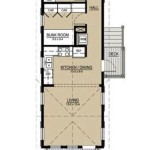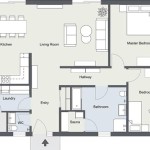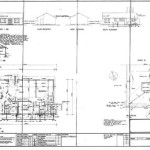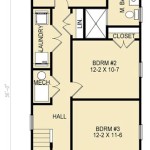Create Your Own Floor Plans
Designing a floor plan for your home is an exciting and rewarding process. With careful planning, you can create a space that is both functional and beautiful, and that meets the needs of your family and lifestyle. Here are a few tips to help you get started.
The first step is to gather your thoughts and ideas. What are your needs and wants for your home? How many bedrooms and bathrooms do you need? Do you want a formal living room or a more open floor plan? Once you have a good understanding of your needs, you can start to sketch out some ideas.
When sketching out your floor plan, it is important to keep in mind the scale of your home. A good rule of thumb is to draw each room at a scale of 1/4 inch to 1 foot. This will help you to visualize the size and layout of your home.
Once you have a few rough sketches, you can start to refine your design. This is where you will need to make decisions about the placement of walls, windows, and doors. It is also important to consider the flow of traffic in your home. You want to make sure that people can move easily from one room to another.
Once you are happy with your design, you can start to draw up a more detailed floor plan. This plan should include all of the measurements for your home, as well as the location of all of the walls, windows, and doors. You may also want to include some notes about the materials that you plan to use for each room.
Creating your own floor plan can be a challenging but rewarding process. By taking the time to plan carefully, you can create a home that is both beautiful and functional.
Tips for Creating a Floor Plan
Here are a few additional tips to help you create a successful floor plan:
- Start with a bubble diagram. A bubble diagram is a simple sketch that shows the relationships between different rooms in your home. This can help you to visualize the flow of traffic and to determine the best layout for your home.
- Use graph paper. Graph paper can help you to draw your floor plan to scale. This will make it easier to visualize the size and layout of your home.
- Consider the furniture. When drawing your floor plan, be sure to consider the furniture that you will be using in each room. This will help you to determine the best placement for walls, windows, and doors.
- Get feedback from others. Once you have a rough draft of your floor plan, ask friends, family, or a professional designer to review it. They may be able to offer some helpful suggestions.
Conclusion
Creating your own floor plan can be a fun and rewarding experience. By following these tips, you can create a home that is both beautiful and functional, and that meets the needs of your family and lifestyle.

Create Floor Plan

Design Your Own Home House Designing Homes

Make Your Own Blueprint How To Draw Floor Plans

Make Your Own Blueprint How To Draw Floor Plans Drawing House Sketch Plan
Custom Floor Plans Making Your Home Uniquely Yours Lake City Homes

From Sketch To Reality How Design A House You Ll Love

Creating Your Dream Custom Floor Plan Citadel Signature Homes

Floor Plans Solution Conceptdraw Com

Impressive Make Your Own House Plans 1 Design Floor Free Home

House Plans And Design








